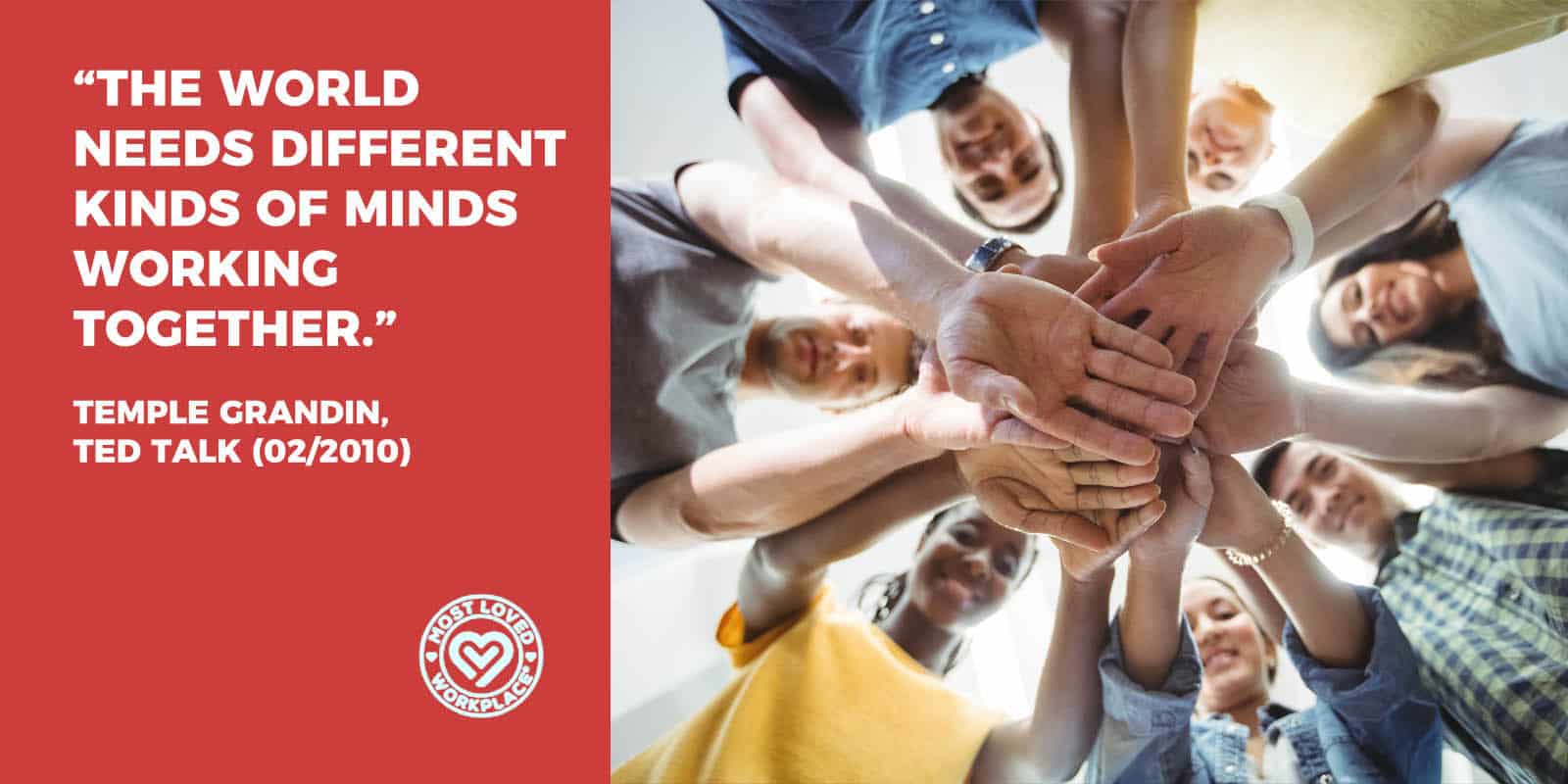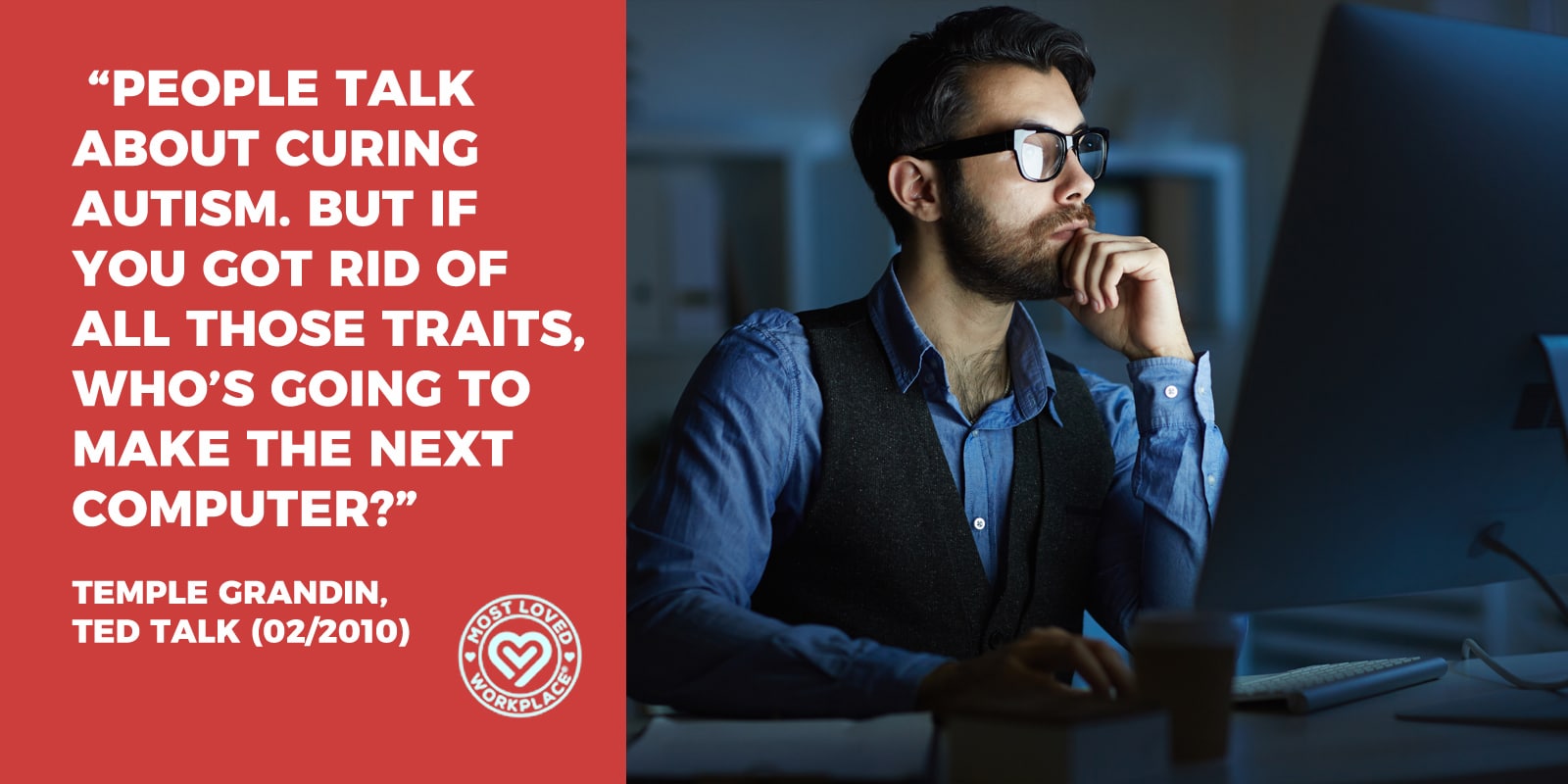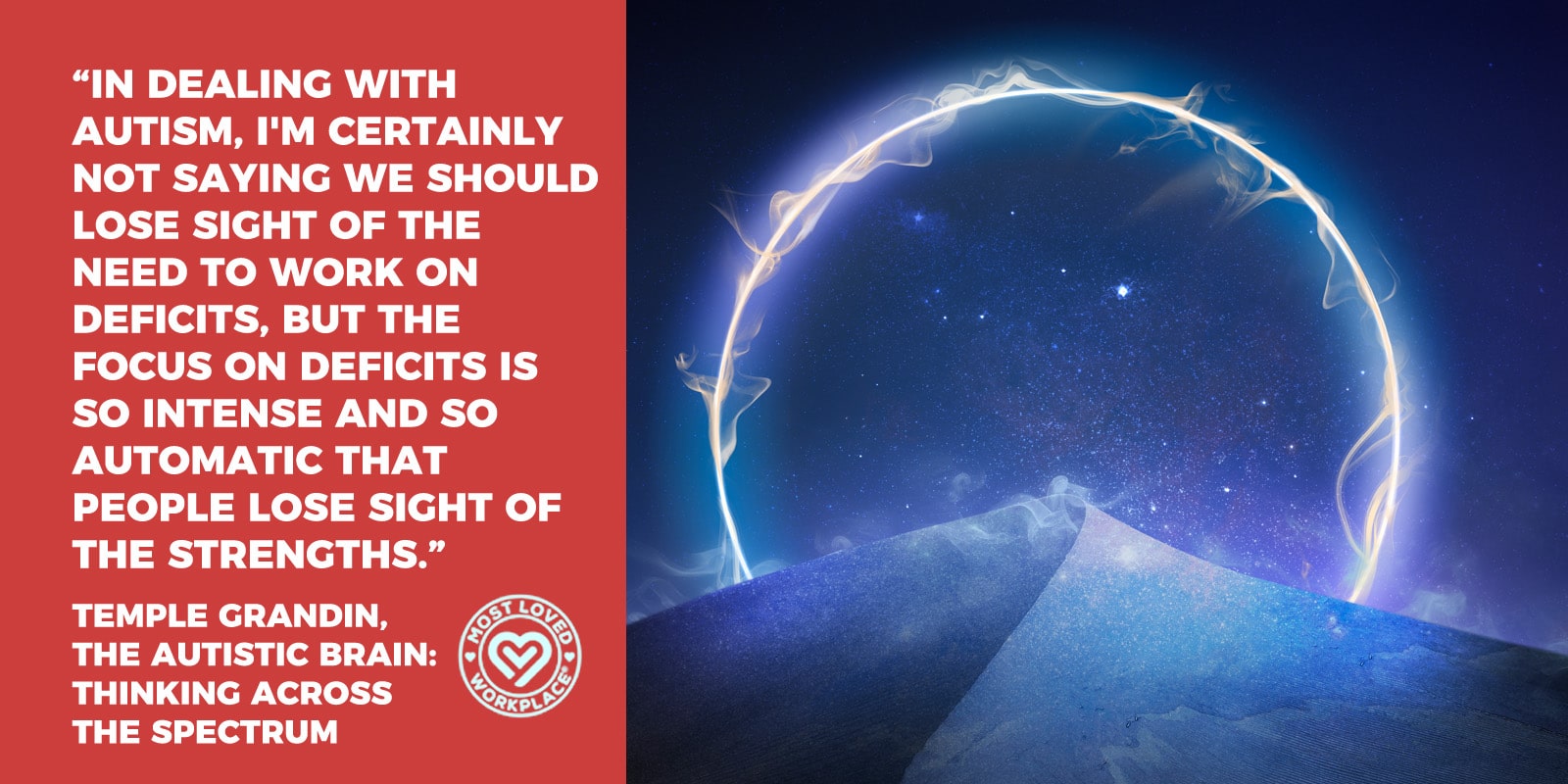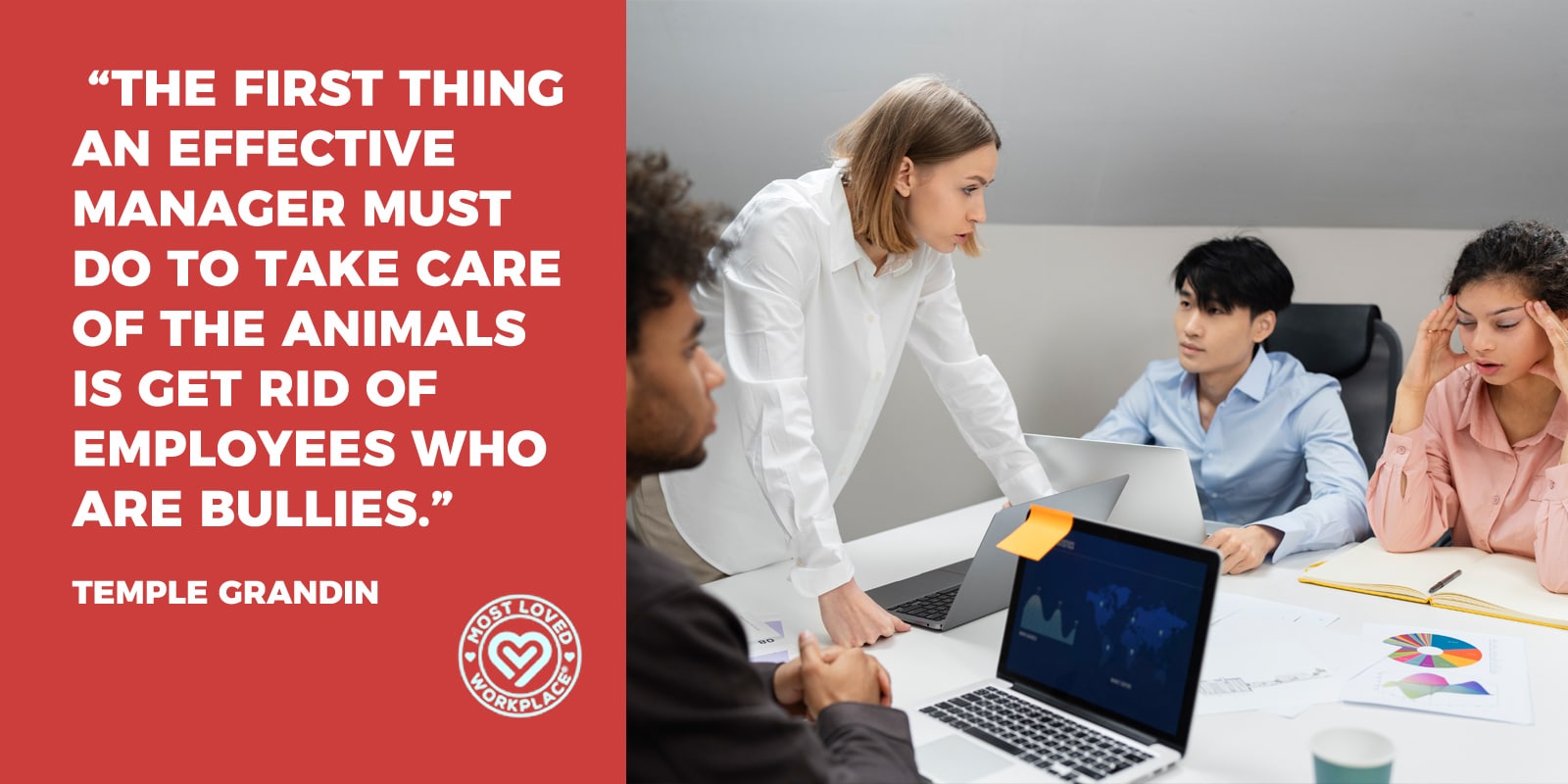Align Your Company’s Future with the Power of Neurodiversity

It ain’t easy to talk about diversity. We sometimes walk on eggshells to avoid offense. But amid the talk about Diversity, Equity, and Inclusion (DEI), we must examine the power of neurodiversity. The COVID pandemic and “The Great Resignation” have presented opportunities to employ and optimize the power of neurodiversity.
Affirmative Action once ruled an organization’s population, assuming that numbers would level the social playing field. Organizations asked employees to admit their gender at birth, age, and racial/ethnic origin. Then, federal audits drove the organization to balance its workforce numerically. The mandate put historically divergent cultures in the same group topping off categories to please political constituents.
Affirmative Action’s statistical focus remains in place. However, many organizations have developed a new self-conscious awareness that diversity, equity, and inclusion can drive improved outcomes. Executive Leaders and Boards of Directors encourage DEI partly because it puts them on a moral high road. But too many of them task Human Resources with execution and walk away.
People of different backgrounds present challenges when an organization depends on values alignment and co-collaboration. But alignment and collaboration also can provide methods and experiences to navigate those same challenges. For instance, when we pursue DEI as avenues to differentiated inputs, just compensation, and collective intelligence, DEI cuts across barriers. We need to consider how the power of neurodiversity can drive organizations.
Understanding Neurodiversity

Temple Grandin is the noted Professor of Animal Science at Colorado State University and an outspoken advocate for autism awareness causes stemming from her personal experiences with the Autism Spectrum Disorder (ASD). She has been giving roughly the same TED Talk to audiences across the country since 2010. Others with ASD disagree with Grandin on some points, but she delivers memorable lines.
We must focus on recruiting, hiring, onboarding, and managing neurodiverse minds as part of DEI efforts. For this, we need a definition:
- Genetics and environment have altered the development of brains in those diagnosed as “neurodivergent” or “atypical.”
- Researchers have not identified a prototypically “normal” brain. However, atypical brain formations occur in neurodiverse brains when viewed alongside control studies of same-age/same-sex brains.
- Diagnosed mental illness may require reasonable accommodation under ADA guidelines and coincide with neurodiverse conditions. However, the focus here does not include mental illness.
- Depending on what we read, the neurodivergent class includes Autism, Dyslexia, Epilepsy, Tourette’s Syndrome, Anxiety, Depression, Down’s Syndrome, Migraine Headaches, etc. This broad categorization comes from what Jason Tougaw called “cerebral pluralism” in Psychology Today, a movement seeking political momentum.
We understand neurodiversity as a continuum, a still ill-defined spectrum of atypical cognitive traits and behaviors. The severity of many cases has caused indifferent but often cruel differentiation and bullying. With some misgivings, this consideration of the power of neurodiversity excludes those with profoundly disabling degrees of brain wiring.
- According to the CDC’s most recent report, 1 in 44 or 2-plus percent of U.S. people have identified as on the ASD spectrum. A new definition of the class and more aggressive testing may account for the increase.
- The data covers reports through 2018, so it does not reflect the influences of the COVID pandemic.
- The Yale Center for Dyslexia & Creativity reports that 5 to 15 percent or 14.5M to 43.5M Americans have dyslexia, making reading, writing, and spelling difficult.
- Dyscalculia affects 3 to 6 percent of the population, making calculation, measurement, and computation difficult.
Several implications may go unnoticed in these statistics:
- We lack precise numbers on the prevalence of neurodiverse conditions among age groups. However, based on available statistics, we find atypical neurology occurs in more Millennials than in GenX or Boomers. Millennials may self-identify more readily, but with more than 15 percent reporting some disorder, it marks a significant workforce segment.
- Eight hundred thousand children living with ASD in the U.S. will become adults in the next ten years. They will enter a workforce where, according to MarketWatch, “a whopping 85% of college grads affected by autism are unemployed, compared to the national unemployment rate of 4.5%.”
- Most individuals with one atypical cognitive condition also have another. This comorbidity complicates the management of when, for instance, an employee manifests as autistic, dyslexic, or ADHD.
Nonetheless, organizations should not recruit out of fear of what the workforce holds. They must recognize the potential and talent of workers, oddly reconfigured in behavior and functioning. Leadership must embrace reasonable accommodation in organizational behavior and functioning to provide a respectful and dignified work environment for all the people who can make a difference.
The Power of Neurodiversity

Professor Grandin loves to point out that we would still be playing shadow games in caves if it were not for the atypical brains that created levers, wheels, and fire.
Without referencing ASD “celebrities” like Bill Gates, Elon Musk, or Steve Jobs, Grandin notes that tech centers thrive on autism genetics. She encourages employers to recruit and manage the unique traits characteristic of neurodiverse brains. For example:
- Autistic adults approach tasks with a logic-based, laser focus. They appreciate rules and routines. They think in pictures, but the sensory overload from sound and visual distractions may rattle them.
- Dyslexic adults think holistically. Struggling with spelling, they have learned to work outside the box. They excel in peripheral vision and enjoy participating in the Big Picture. Having wrestled with learning systems that do not understand, dyslexic adults show great empathy.
- Dyscalculia makes computation difficult, but it relieves brains to focus inwards and creatively. They prove artistic and intuitive.
We could go on, but we must dismiss labels like “high” or “low” functioning. Grandin calls ASD a “continuum.” Cassandra Crosman goes further, affirming, “The autism spectrum is not linear or binary [author’s bold text] or a sliding scale from low to high functioning, but is a range of needs and ability in executive functioning, verbal and nonverbal communication, motor skills, sensory sensitivity, perception, and social interaction.” And organization leadership must begin with this understanding.
Launching neurodiversity employment initiatives

Organizational leadership must examine its goals and core values to ensure their alignment. Leaders across the C-suite and functional silos must clearly understand the desired outcomes and impacts of the organization’s work. Then, they can enable and empower HR to recruit, develop, engage, and sustain a workforce capable of killer achievements.
For some time, the best organizations have recognized the direct and indirect contribution of an integrated workforce. Strong organizations have profited from the talents otherwise differentiated by race, ethnicity, gender identification, age, and other protected statuses. However, they have only recently accepted the challenge of aggressively funding, recruiting, employing, and managing neurodiverse people.
SAP, Microsoft, Ernst & Young, JPMorgan Chase, Ford, Hewlett Packard, and Freddie Mac, among others, have launched initiatives to attract neurodiverse talents. Not surprisingly, they have secured support and advice to get it right.
- Microsoft’s Neurodiversity Hiring Program urges neurodiverse candidates to submit resumes to a focused email address. They have a chance to demonstrate their value in non-conventional interview settings during an invitation-only four-day assessment.
- Outside recruiters specializing in the preparation and placement of candidates include Potentia, Zavikon, and NeuroTalent Works. They use similar frameworks to find, place, and mentor workers.
- Ameritrade, Key Bank, and Dell Technologies join dozens of other firms on the Neurodiversity Network.
- Goldman Sachs holds that “we believe who you are – including everything that makes you unique – contributes to how you add value to what you do.” Supporting that claim, the company offers a robust, paid, eight-week internship program in conjunction with Specialisterne, “harnessing the talents of people on the autism spectrum and other neurodivergent people.”
Amherst, Stanford, Yale, Cal State Chico, and Brown have launched neurodiverse initiatives. The Kinney Center for Autism Education and Support at Saint Joseph’s University offers majors with customized curricula. It has also dedicated a dormitory for neurodiverse residents and launched a minor “in managing neurodiversity at work to equip students to be future employers and future management professionals with the skills necessary to navigate the unique needs of a neurodiverse workforce.”
Managing Neurodiversity

Managing neurodiverse employees on teams, in unique environments, or among the rank-and-file comes with challenges and costs. If, for example, the organization wants to meet a diversity quota, it will not succeed if it does not also build constructive and empathic environments.
For instance, ASD workers may perform rote tasks on a factory floor with few errors. But managers and line supervisors must train the employees they interact with to respect their personhood and individuality. Usually, co-workers will become mentors and protectors.
Other contexts may present more complexity:
- Attitude: Owners and senior stakeholders must give more than lip service to neurodiverse employment initiatives. Their language, communications, and actions must model the commitment. And they must require the same of managers everywhere.
- Versatility: Organizations vary in size, purpose, and industry sector. They have no one-size-fits-all model, framework, or strategy. They may have trouble designing programs because neurodiversity has no finite definition or symptomatology. Because employees must self-identify as neurodiverse, many choose not to, preferring anonymity.
- Support: Organizations should create Employee Resource Groups to support the needs of the neurodivergent community. Individuals may seek emotional, practical, and physical accommodation with the ERG’s help.
- Scale: Planners should scale related initiatives. It helps everyone when the strategy for implementation and evaluation has a timeline and metrics. Only then can organizations push programs broadly and deeply.
- Mentor: Organizations must promote practical and emotional mentoring. They offer psychologically safe ecosystems for neurodiverse workers. They may benefit from a conscientious manager or may need a “buddy.” Mentors must pair their interests and targets with their mentees, but they must also report successes and failures.
- Outreach: Employers cannot sit back and wait for neurodiverse minds to apply. They must partner with specialized agencies, connect with college placement offices, and solicit employee referrals.
- Train: Managers, supervisors, and co-workers need a break. Employers must provide training on the theory behind neurodiverse conditions. But they must also train in the practical handling of random and disruptive behaviors.
- Assessment: Neurodiverse workers must have a chance to succeed. They respond better to clearly defined and modeled metrics. They see through a lack of transparency, so objective measures work best.
In general, neurodiverse people take great satisfaction in accomplishing tasks that make a real difference and accepting recognition for a well-done job. And that really is not all that different!
If you would like to get certified for free, start the process here now.
Louis Carter is the founder and CEO of Best Practice Institute, founder of Most Loved Workplace and the author of more than ten books on best practices in leadership and management, including Change Champion’s Field Guide, In Great Company, and Best Practices in Talent Management. Thought leaders and executives voted him one of Global Gurus Top 10 Organizational Culture thinkers worldwide. He is the host of the Leader Show on Newsweek.

Louis Carter is the founder and CEO of Best Practice Institute, Most Loved Workplace, and Results-Based Culture. Author of In Great Company, Change Champions Field Guide, and Best Practices in Talent Management, as well as a series of Leadership Development books. He is a trusted strategic advisor and coach to CEOs, CHROs, and leaders of mid-sized to F500 companies – enabling change and steering employer brand development together with highly effective teams, leaders, and organizations as a whole.

0 Comments